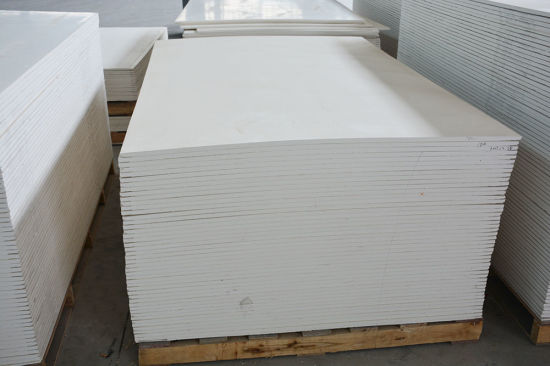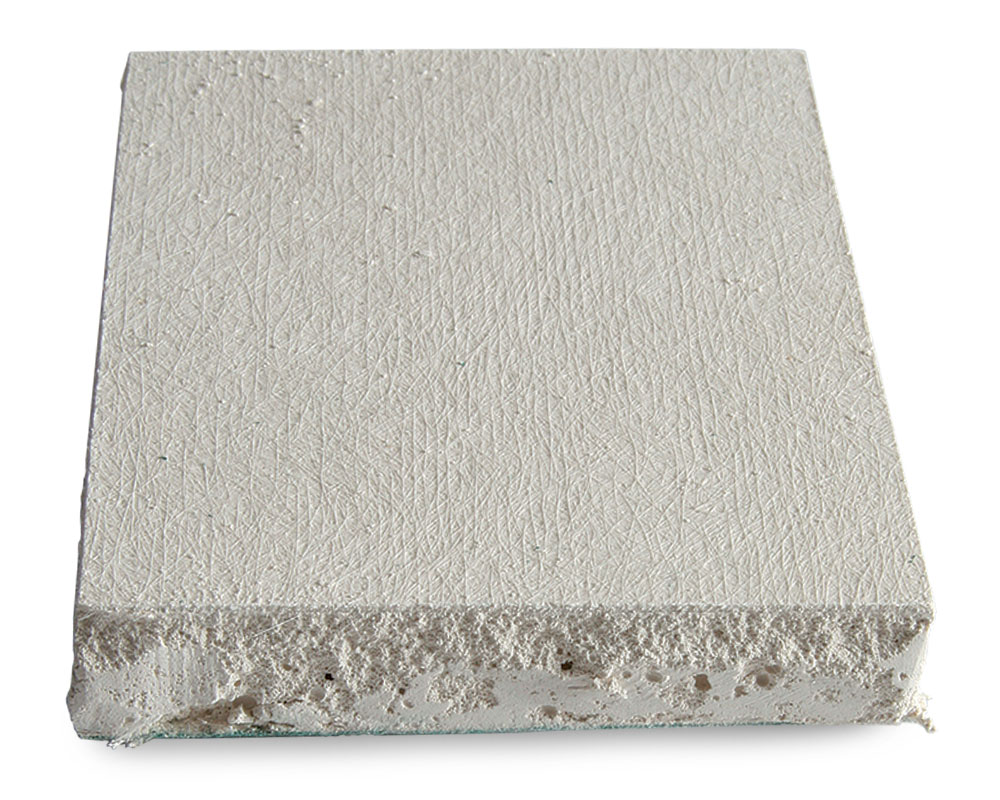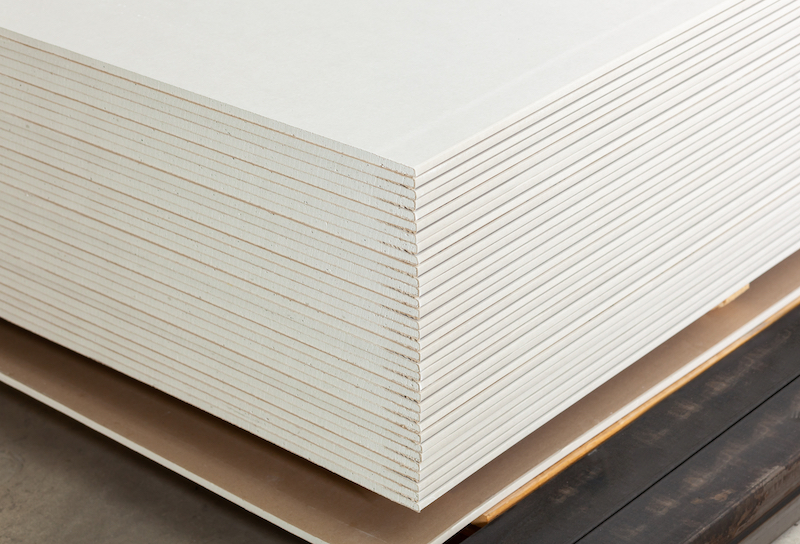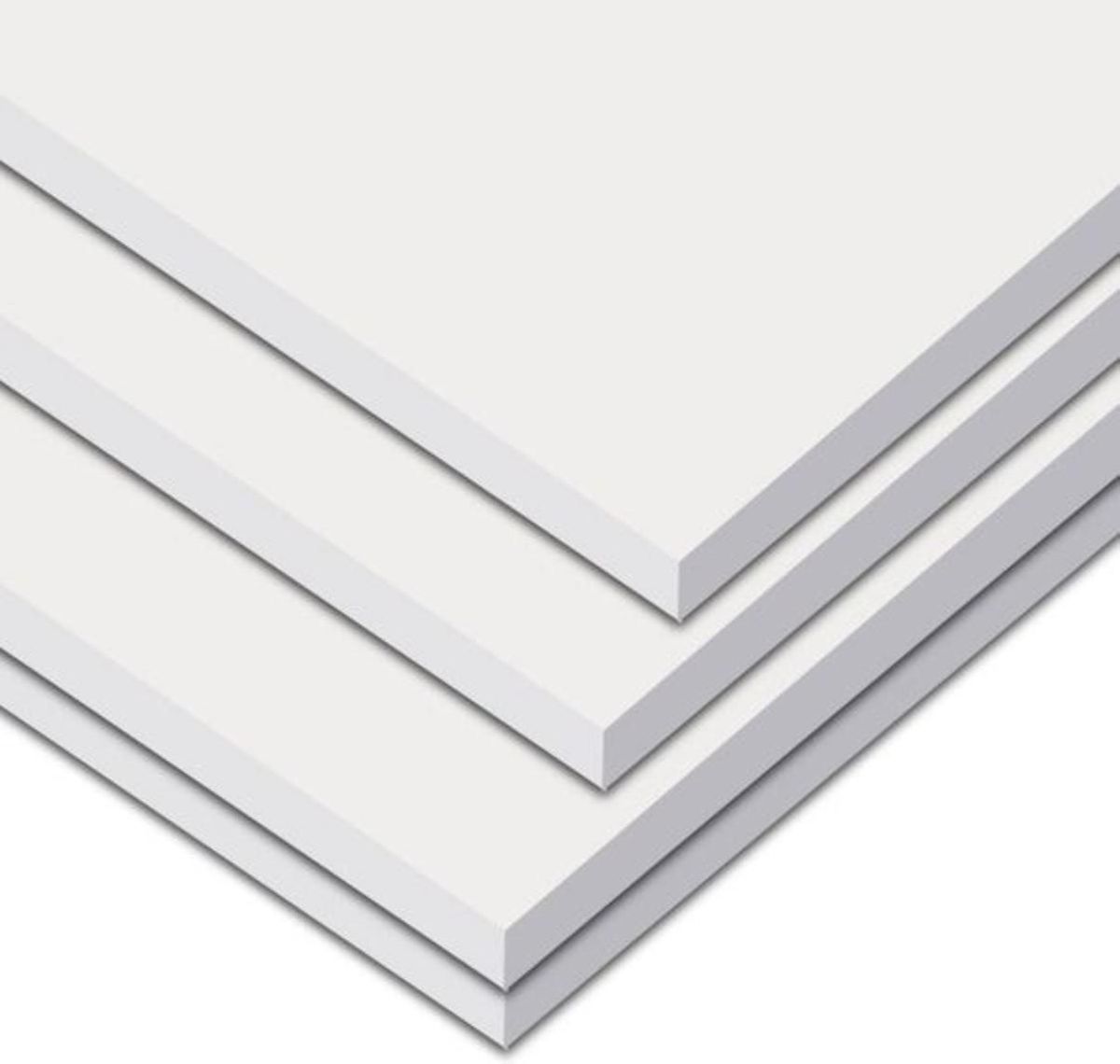Paperless drywall was developed recently in order to combat problems with mold. As stories of mold-related health concerns have proliferated in the news during recent years, all of the major drywall manufacturers have rolled out new products designed to resist the growth of mold.
Traditional drywall is made up of gypsum and paper. To create a sheet of drywall, the gypsum is pressed between two thick pieces of paper and then kiln-dried. Since the paper covering on traditional drywall can allow for the growth of mold if it becomes damp or wet, paperless drywall was developed in an attempt to combat this problem.
Paperless drywall is similar to traditional drywall in that it also contains a gypsum core. The difference is that instead of using paper as an outer wrapping, fiberglass is used instead. The gypsum core in paperless drywall is also water-resistant, unlike the core of traditional drywall. These changes in the makeup of the drywall are intended to reduce the risk of mold growth by making the drywall as resistant as possible to moisture and water. While the new paperless drywall products are not mold-proof, they offer more protection from the threat of mold than traditional drywall.



Applications
Paperless drywall can be used in any area where standard drywall can be used, and it is recommended by manufacturers for use especially in areas where higher moisture levels could raise concerns about mold. Bathrooms, kitchens, basements and garages are all areas that could possibly benefit from the installation of paperless drywall. While paperless drywall is more water-resistant than traditional drywall, it is not intended for use in conditions where it will be exposed regularly to water, such as inside a shower stall.
Pros and Cons of Paperless Drywall
There are benefits and concerns to consider with paperless drywall, a relatively new product. Some advantages to consider when choosing it over traditional drywall include the following.
•It is designed to offer an improved level of protection from the growth of mold.
•The surface strength of paperless drywall is greater than that of standard drywall due to the added rigidity of the fiberglass covering. It is less likely to become damaged because of this attribute.
•Paperless drywall offers special advantages in high-moisture areas, such as basements and bathrooms, where mold growth is a big concern.
While there are some great features offered that will be helpful in certain applications, there have been some complaints and concerns raised, as well.
•Paperless drywall is more expensive per square foot, compared to traditional drywall.
•In some areas of the U.S., availability is also a concern. Paperless drywall is a fairly new product and may not be available in some areas.
•A major concern that has been the topic of some debate is that paperless drywall is more difficult to install and finish than standard drywall.



Installation and Finishing
Installing and finishing paperless drywall is a straightforward process that can be completed with the right tools and techniques. Here’s a step-by-step guide on how to install and finish paperless drywall.
Preparation: Before you begin, ensure that the framing is properly spaced and that all electrical and plumbing work is completed. Measure and cut the paperless drywall panels to fit the wall or ceiling, leaving a small gap at the edges for expansion.
Installation: Start by positioning the first panel against the wall or ceiling, ensuring that the tapered edges are facing outwards. Use drywall screws to secure the panels to the framing, spacing the screws every 12 inches along the edges and every 16 inches in the center.
Taping and mudding: Once the paperless drywall is installed, apply fiberglass mesh tape over the joints and corners. Then, using a taping knife, apply a thin layer of joint compound over the tape, feathering the edges to create a smooth transition. Allow the compound to dry before applying a second and third coat, sanding between each coat for a seamless finish.
Sanding and finishing: After the final coat of joint compound has dried, use a sanding block or pole sander to smooth out any imperfections and create a uniform surface. Wipe away the dust with a damp cloth before priming and painting the paperless drywall to complete the finishing process.
In conclusion, installing and finishing paperless drywall is a manageable task that can be accomplished with the right tools and techniques.
For 20 years, VOSTOSUN is dedicated to developing and manufacturing of gypsum and plaster architectural material production equipment. Our paperless drywall plant has a production power of 2 million m2/year - 50 million m2/year, the products are of high quality.
We offer a series of services, including plant design, construction, production line commissioning, operations, training, maintenance, upgrades, etc. Services we also offer:
●Paperless drywall material testing and evaluation;
●Paperless drywall production devices design and consultant;
●For technical problems, we offer analysis and technical modification services, to help you improve product quality and save cost;
●Full plant production management and maintenance service, for better economic returns;
●Factory designing and planning.
Post time: May-17-2024

